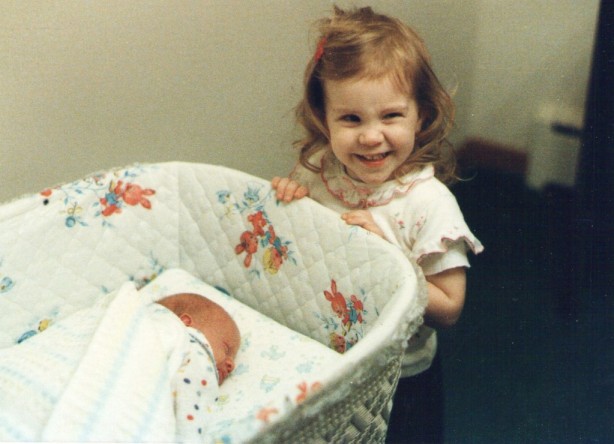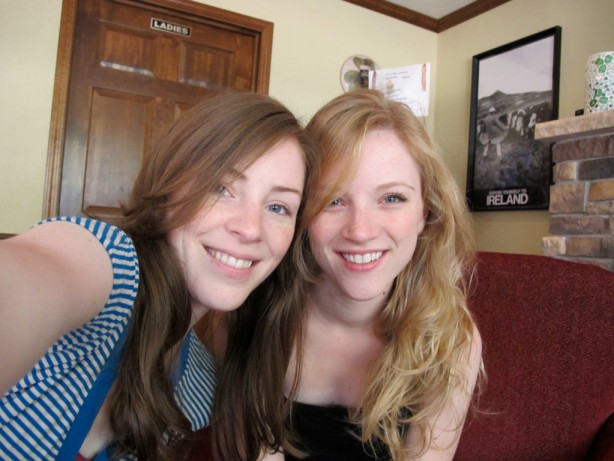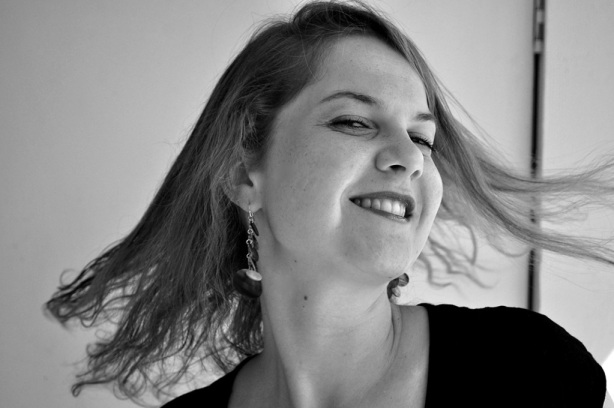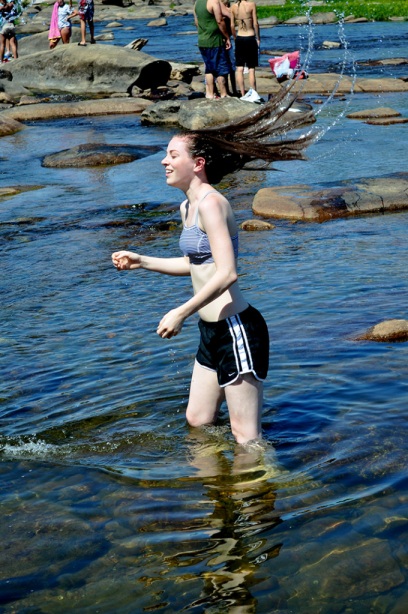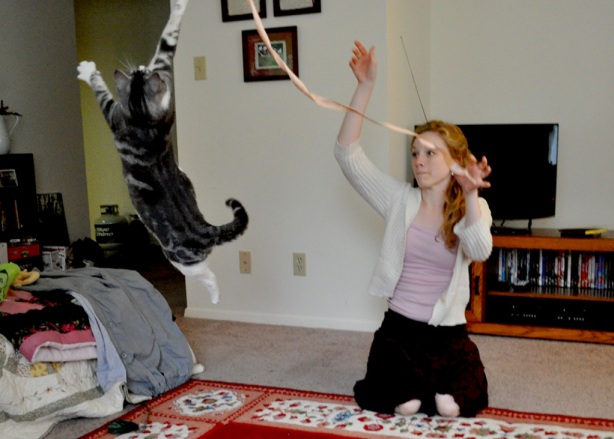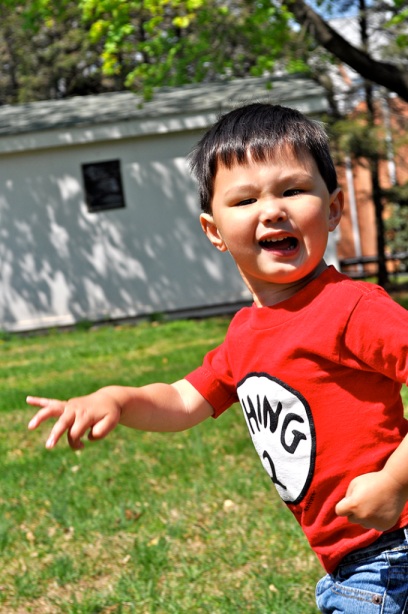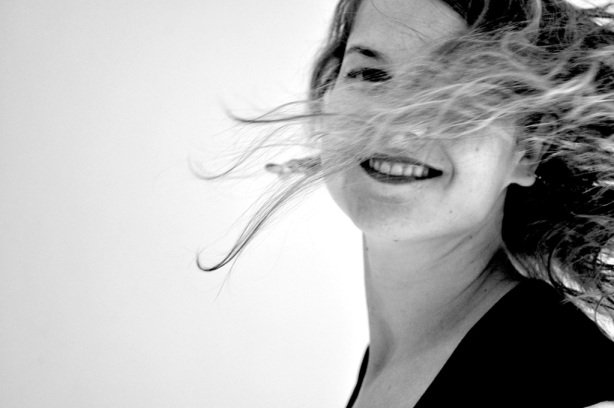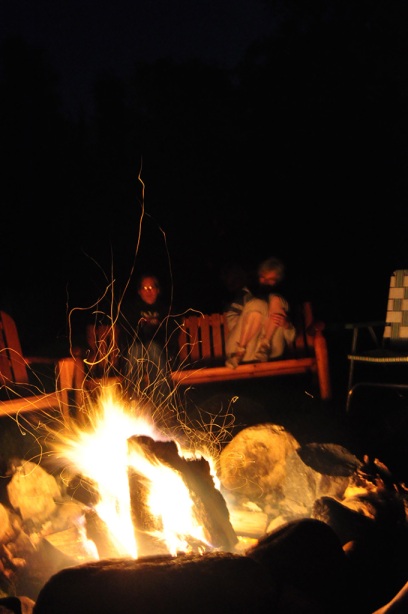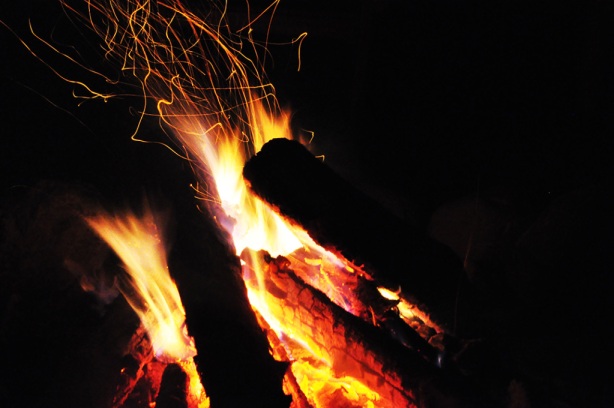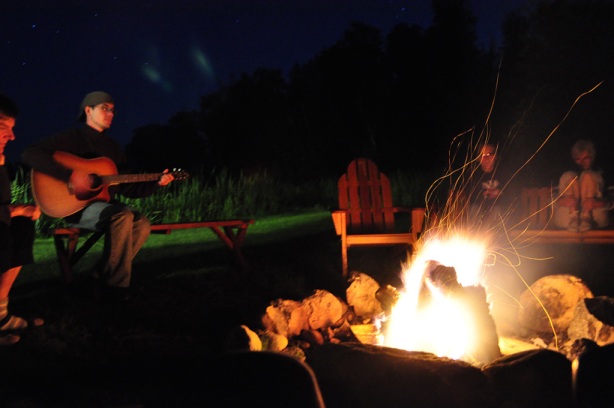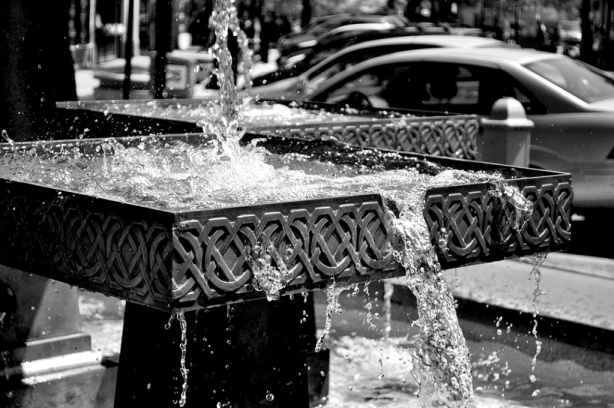I thought you’d all be pleased to know that I’ve been working on my fake smile.
My journey all began when I realized that in every picture of me smiling for the past 27 years (my whole life), my eyes are both squinty and asymmetrical. My cheeks are stretched out, wrinkles are forming every which where, and it can be quite . . . funny lookin’. This started when I was young, and thought that smiling was supposed to be a grotesque face contortion:
I blame the untimely appearance of my sister Erica. I had everything under control, and she just had to come along and pull the rug out from under me. I was queen! Me, me, me! And then suddenly it was all about this squalling tiny thing with no hair. No wonder I favored a bleak grimace.
I recently decided it was high time in my life to create a fake smile–one that all happened on the lips, leaving the eyes relaxed and as open as possible. I wanted people to realize that there are actually eyes in there, not just slivers of shadow. I wanted to improve my photographic track-record.
After her untimely disruption of my world 25 years ago, Erica recently redeemed herself by helping me practice my smiling skills at a little cafe in Boulder Junction during Family Vacay 2010. When she understood the great wisdom of what I was endeavoring to achieve, she whipped out her camera and photographed my first attempts.
If you are seeking to work on your own fake smile, here is a set of instructions to help you on your way.
First:
Observe your real smile. Identify the points of change.
My points of change: less wrinkles all around. More eyes. Less like the Grinch and more like Halle Berry.
Now that you’ve identified the areas of opportunity, stretch the face. It’s important to limber up your skin before you try anything at all. This will help avoid training injuries.
This part can get pretty frightening for onlookers, so most of you may want to do this with only a few trusted loved ones present. And most of you may choose not to photograph the occasion, since this is blackmail in the workings.
Once your facial muscles are feeling warm and relaxed, make your first attempt.
Get some feedback immediately. My sister quickly pointed out that it was a disaster and it was even worse than my real smile. “We’re going for symmetrical eyes! Symmetrical!” she coached, wondering if I would ever get it. Time for take #2. It may help to look at something truly amusing to put the right vibe into your attempt. Thankfully, we had this nearby poster to help matters out.
Quick, while you’re mildly amused, plaster the “fakey” on your lips.
Ta-daa!
Great, isn’t it? I think I more than doubled the exposed surface area of my eyeballs! I think I reduced the Grinch wrinkles by at least 50%, what do you think?
A little blank and expressionless for a smile, you say? A little lifeless?? Well no one asked your opinion anyway!
You know . . . maybe it is a little flat. A little stiff. Where’s the sincerity? Where’s the joy? I may need a follow-up lesson to work out the kinks, Erica. Maybe you could drive on up here, eh? Because folks, Erica has completely mastered the relaxed smile that also radiates energy. Just look at her wedding pictures here, or the shots of her on the dock here for proof. My issues may be rooted in my all-or-nothing personality; I can’t smile partially. It’s either the full wrinkly smile experience, or it’s a flat lifeless mask. Why can’t I learn to do an awesome halvsies smile? And why can’t I look exactly like Halle Berry? Why??
And on that cliffhanger, I am signing out. I may choose to do a follow-up post charting my progress up the learning curve–but I may not. This blog is all about the suspense.
Thanks all for joining me today. Erica is available and on-call for fake smile training sessions. It’s a deal, she only charges $50,000 plus hidden fees and extra charges.
Since I was her first client, I got away with purchasing our coffees. Or did she purchase them? It’s hard to recall.
